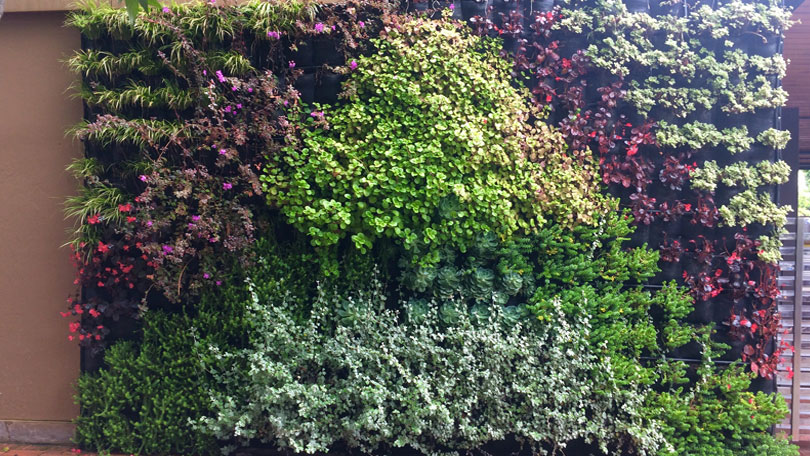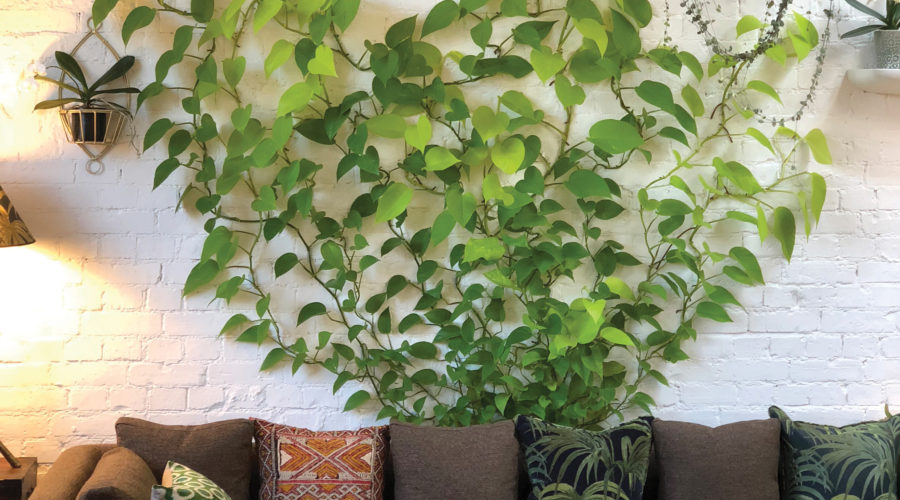How To Build A Living Wall From Scratch
Building a room in an unfinished basement is a way to add valuable living space to a house with relatively little expense. A basement room can be an office, recreation center, entertainment area, children's playroom or even a guest sleeping room. You can build a large basement room -- one that goes from wall to wall -- or partition off a smaller area to separate it from storage and utility spaces. Building a basement room is basically creating a perimeter with stud-framed walls, adding some ceiling finish and perhaps laying tile or other flooring.
How To Build A Living Wall From Scratch Without
1
Build a basement room using at least two outside or foundation walls to simplify construction. Test the walls for moisture by taping a foot-square piece of plastic on the wall for 24 hours; if there is moisture inside, treat the walls with some waterproofing, either a membrane fastened to the wall or a good waterproof paint; waterproof paint is a good idea even if the wall is dry.

A half wall (also called a knee wall) is a great way to divide a space without closing it in. Use these step-by-step instructions to build one in your home. How to Build a Pony Wall Room Divider Carter Oosterhouse shows how to divide a large room with knee-wall partitions. Note: If building the Fencl tiny house design, first install loft collar ties and flooring. Construct trusses per plans; Make sure you tie into your wall framing with Hurricane Ties; Ensure height stays under 13.5 feet; Build headers for rough opening for skylight; Roof Sheathing. Plan layout and dimensions; Cut boards; Glue truss edges. Apr 11, 2015 Tools for How to Build a Living Wall Vertical Garden: - stud finder - tape measure 4-foot level - clamps - combination square - circular saw with fence - drill/driver - 9-by-1/4-inch drill bit. Mar 02, 2018 The Bricky Pro is an adjustable bricklaying tool that delivers uniform joints. This template ensures you can put the exact amount of mortar needed. It can build all standard wall sizes, perfect.
2
Check the corners for square by measuring with a tape measure 3 feet down one wall and 4 feet down the other; if the diagonal between those two ends (the hypotenuse of the triangle) is 5 feet, the corner is square and makes a good starting point. Make a square corner with stud walls if the foundation corner is not square.
3
Make walls of 2-by-4-inch framing lumber, with top and bottom plates and studs set on 16-inch centers, fastened with 16d framing nails and a hammer. Measure the height from basement joist to floor with a tape measure and build walls about 1 1/2 inches shorter, so they can be built on the basement floor and erected into place.
4
Living Wall Succulent
Frame foundation walls in a dry basement with furring strips, typically 2-by-2-inch boards nailed to the wall with concrete nails just like stud walls, with plates and vertical studs. Add rigid foam insulation between the furr studs, secured with adhesive or concrete nails. Frame outside walls in a damp area like interior walls but set them an inch away from the foundation wall.
5
Square each wall as it is being built by measuring corner to corner and adjusting plates and studs until the diagonals are identical. Frame a door in one wall with a two-by-four header across the top of the opening, supported by studs on both sides. Make the door frame with two outside studs the full depth of the wall and two inside studs from the header to the bottom plate.
6
Snap chalk lines on the floor to mark the wall positions. Use either the 3-4-5 or diagonal method to make sure all corners are square. Erect walls and set them plumb with a level. Fasten bottom plates to the basement floor with concrete nails. Slide a two-by-four into the 1 1/2-inch gap at the top, between the top plate and the floor joists above it. Toenail that filler to the wall top plate and to the floor joists.
7

Put drywall on the ceiling by fastening 4-by-8-foot drywall sheets to the ceiling joists with drywall screws and a screw gun; get help lifting drywall panels to the ceiling. Install drywall on both sides of the interior walls, screwed to wall studs. Cut out drywall at a door opening with a drywall saw. In addition, cut out drywall to fit around any electrical fixtures or outlets. Fill seams with drywall tape and joint compound and sand the drywall smooth.
8
Add any flooring, such as vinyl or ceramic tile, and finish the walls with any desired basement or trim molding. Hang a prehung door in the doorway to complete the room.
Living Wall Outdoor
Things You Will Need
- Plastic
- Tape
- Waterproof membrane or tape (optional)
- Tape measure
- 2-by-4-inch and 2-by-2-inch framing lumber
- Concrete nails
- 16d framing nails
- Hammer
- Rigid foam insulation (optional)
- Chalk line
- Drywall
- Drywall screws
- Screw gun
- Drywall saw
- Drywall tape
- Joint compound
- Flooring (optional)
- Baseboard and trim (optional)
- Prehung door

Build A Living Wall
References (5)
About the Author
Bob Haring has been a news writer and editor for more than 50 years, mostly with the Associated Press and then as executive editor of the Tulsa, Okla. 'World.' Since retiring he has written freelance stories and a weekly computer security column. Haring holds a Bachelor of Journalism from the University of Missouri.